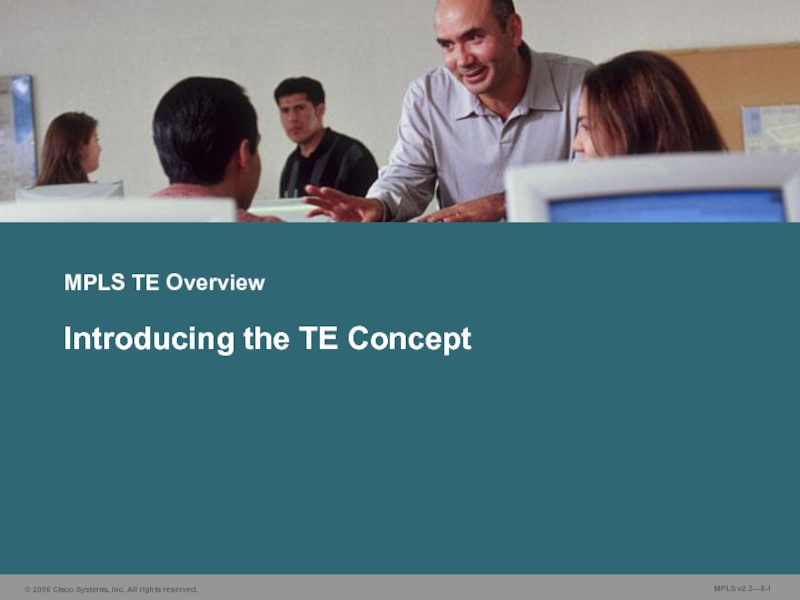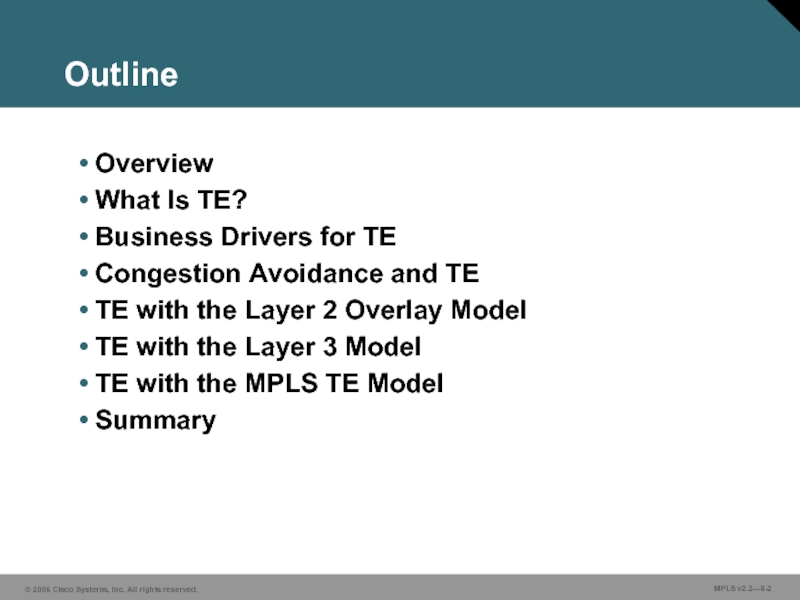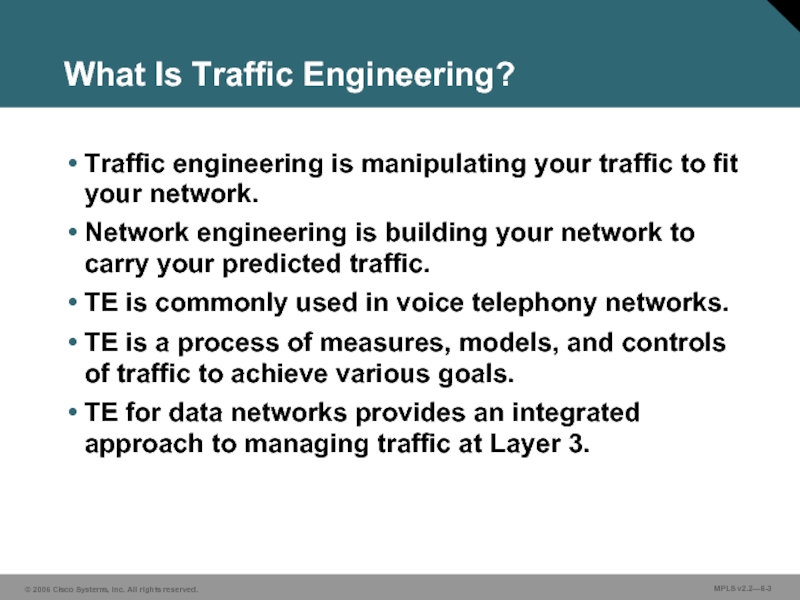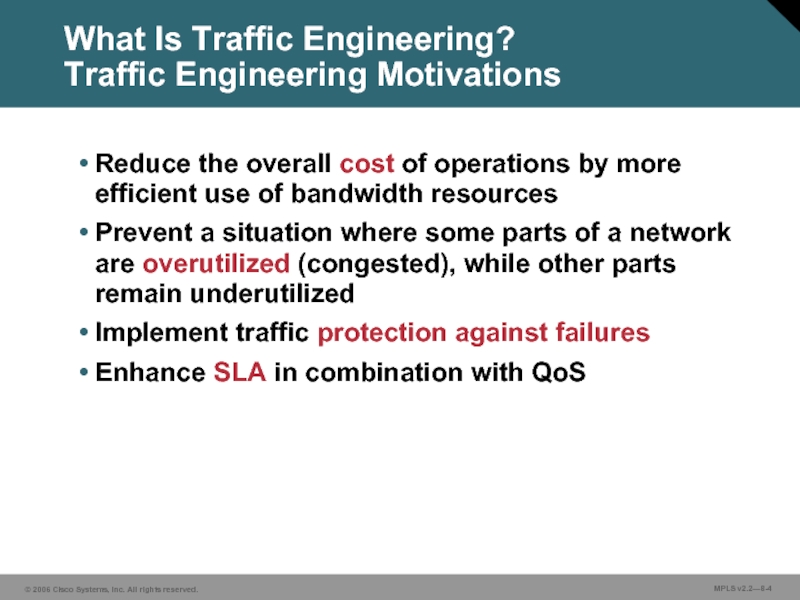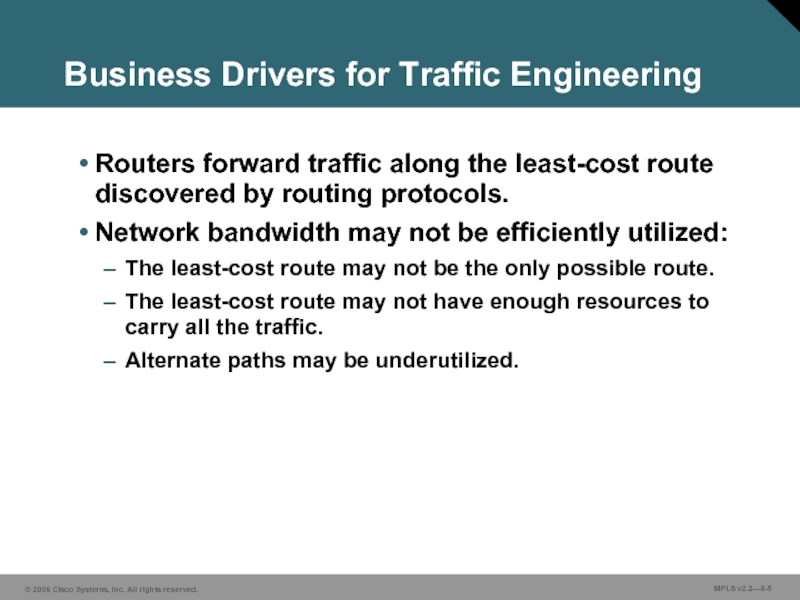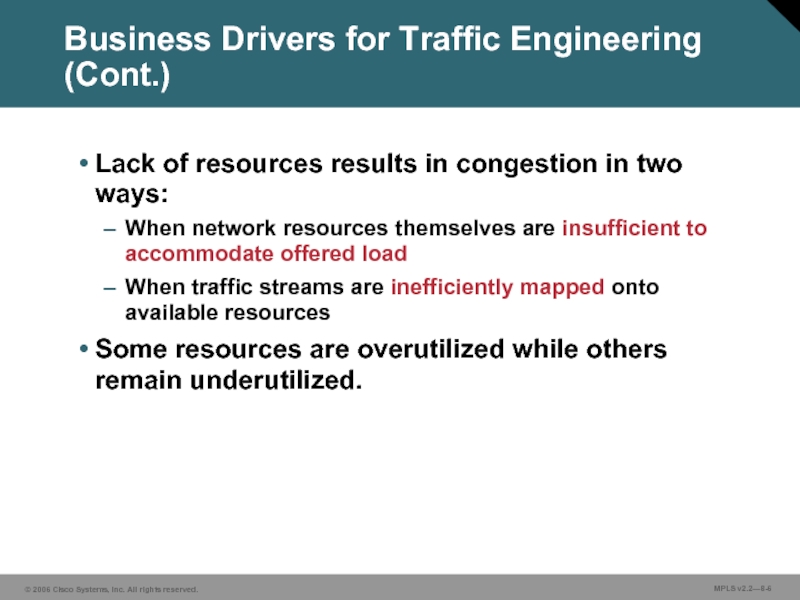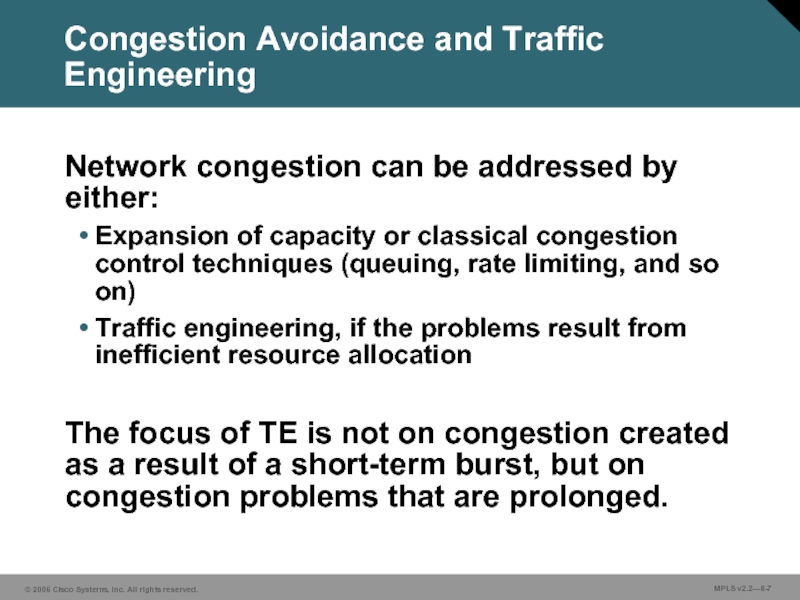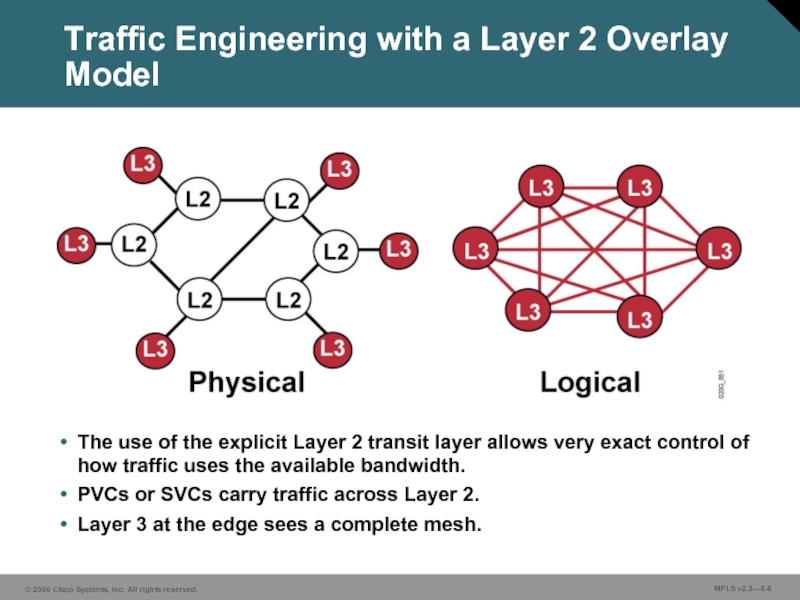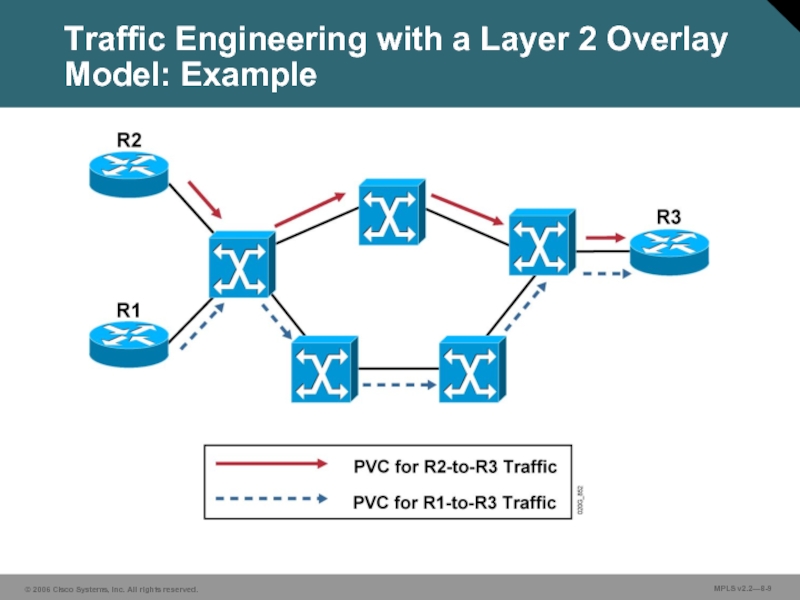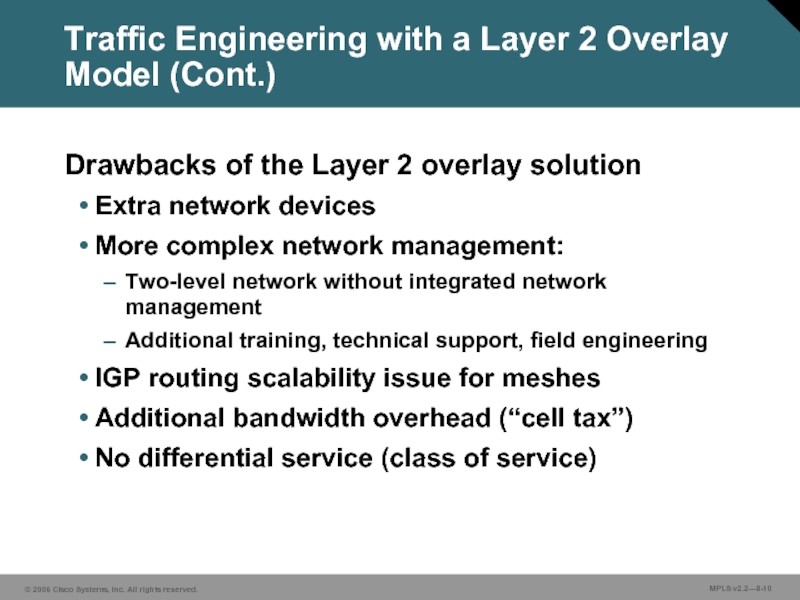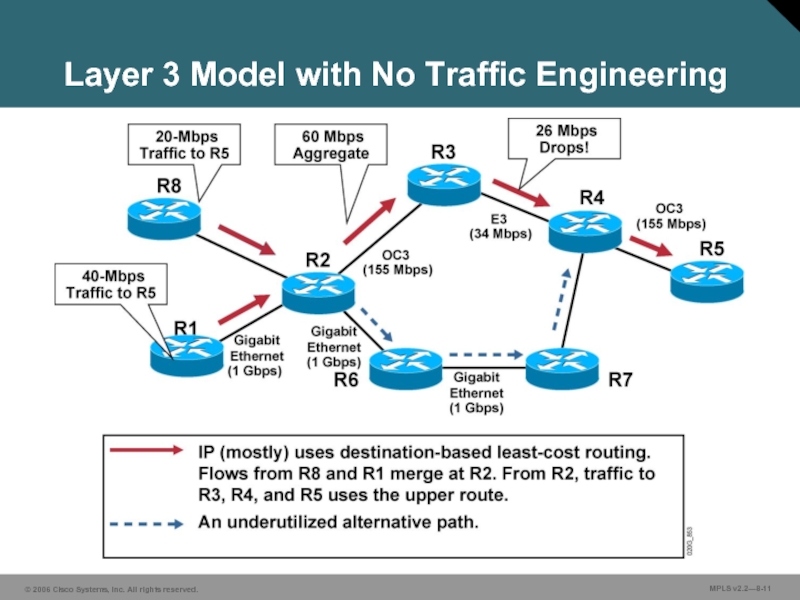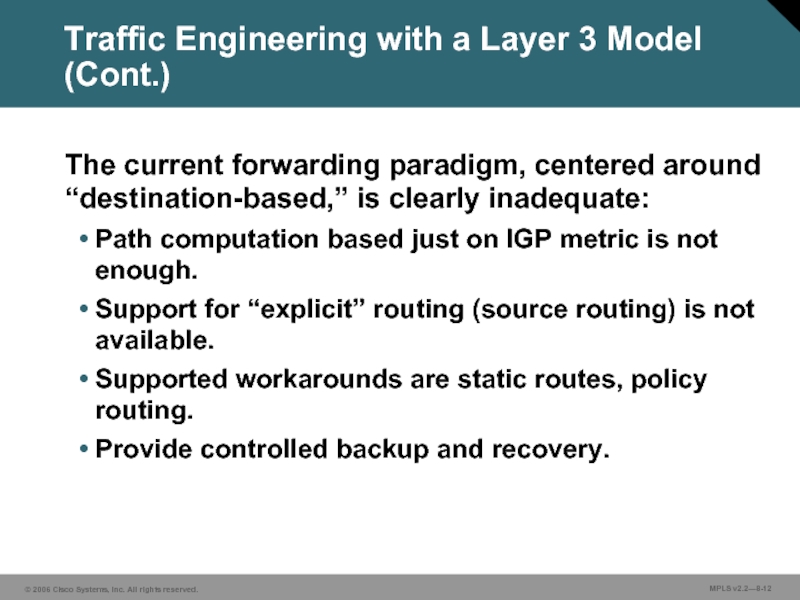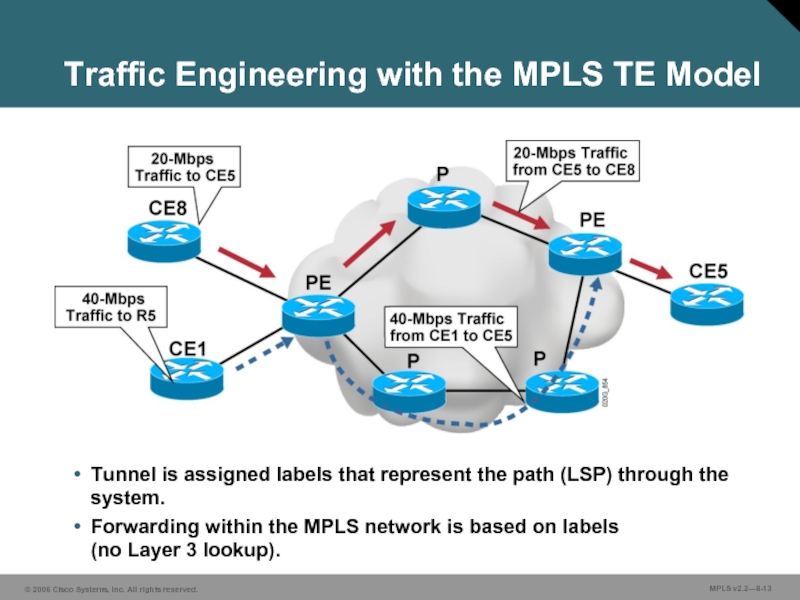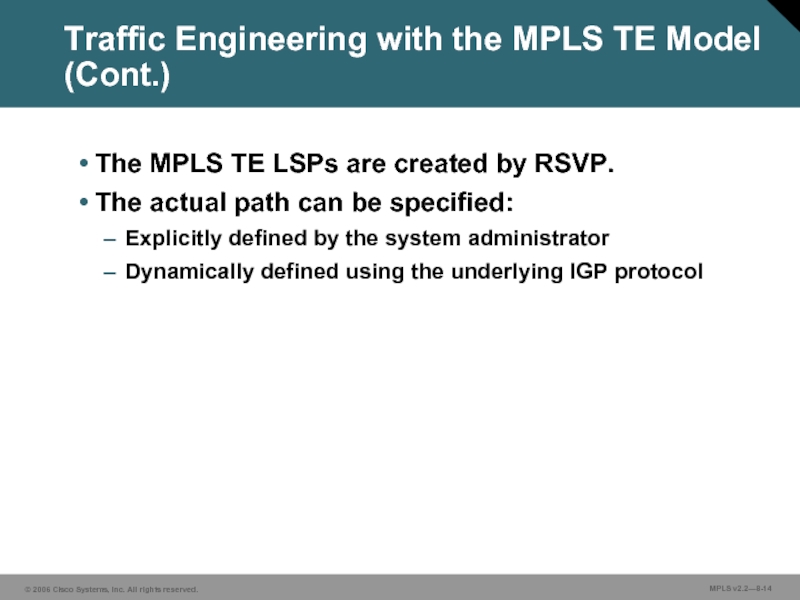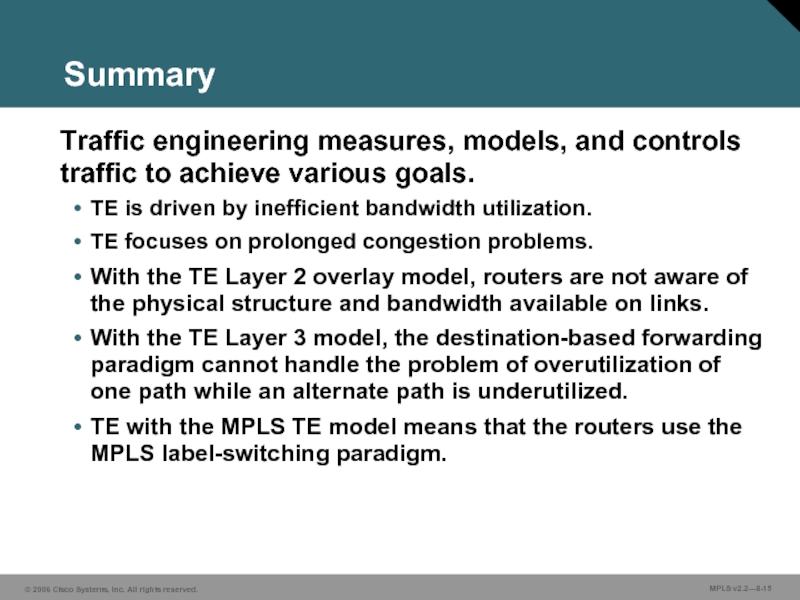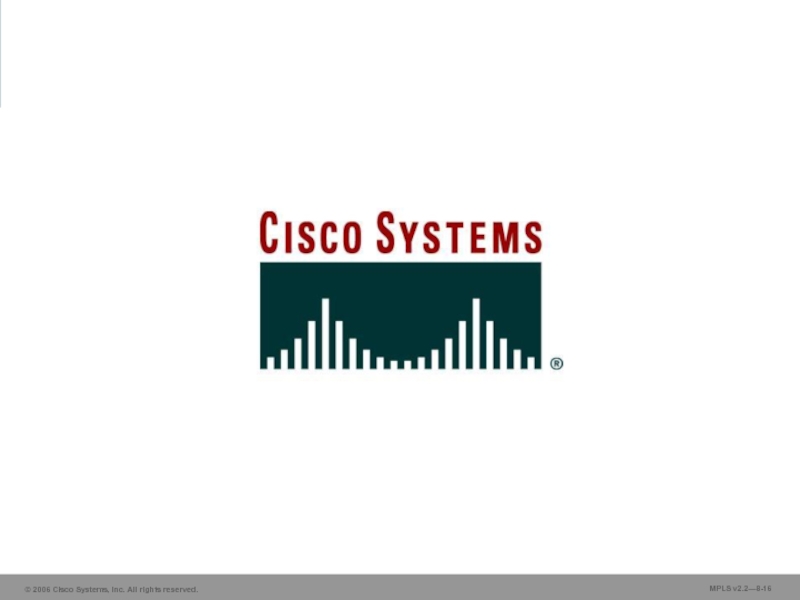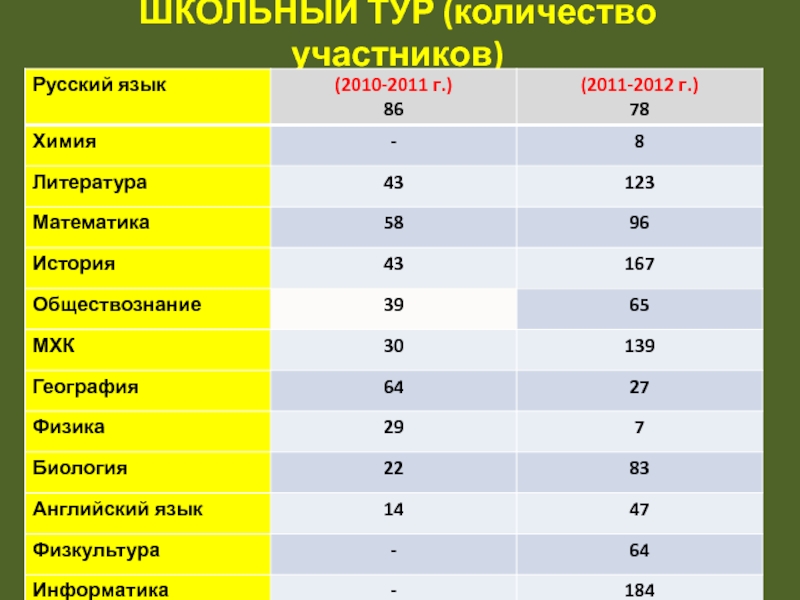- Главная
- Разное
- Дизайн
- Бизнес и предпринимательство
- Аналитика
- Образование
- Развлечения
- Красота и здоровье
- Финансы
- Государство
- Путешествия
- Спорт
- Недвижимость
- Армия
- Графика
- Культурология
- Еда и кулинария
- Лингвистика
- Английский язык
- Астрономия
- Алгебра
- Биология
- География
- Детские презентации
- Информатика
- История
- Литература
- Маркетинг
- Математика
- Медицина
- Менеджмент
- Музыка
- МХК
- Немецкий язык
- ОБЖ
- Обществознание
- Окружающий мир
- Педагогика
- Русский язык
- Технология
- Физика
- Философия
- Химия
- Шаблоны, картинки для презентаций
- Экология
- Экономика
- Юриспруденция
Introducing the TE Concept презентация
Содержание
- 1. Introducing the TE Concept
- 2. Outline Overview What Is TE? Business Drivers
- 3. What Is Traffic Engineering? Traffic engineering is
- 4. What Is Traffic Engineering? Traffic Engineering
- 5. Business Drivers for Traffic Engineering Routers forward
- 6. Business Drivers for Traffic Engineering (Cont.) Lack
- 7. Congestion Avoidance and Traffic Engineering Network congestion
- 8. Traffic Engineering with a Layer 2 Overlay
- 9. Traffic Engineering with a Layer 2 Overlay Model: Example
- 10. Traffic Engineering with a Layer 2 Overlay
- 11. Layer 3 Model with No Traffic Engineering
- 12. Traffic Engineering with a Layer 3 Model
- 13. Traffic Engineering with the MPLS TE Model
- 14. Traffic Engineering with the MPLS TE Model
- 15. Summary Traffic engineering measures, models, and controls
Слайд 2Outline
Overview
What Is TE?
Business Drivers for TE
Congestion Avoidance and TE
TE with the
Layer 2 Overlay Model
TE with the Layer 3 Model
TE with the MPLS TE Model
Summary
TE with the Layer 3 Model
TE with the MPLS TE Model
Summary
Слайд 3What Is Traffic Engineering?
Traffic engineering is manipulating your traffic to fit
your network.
Network engineering is building your network to carry your predicted traffic.
TE is commonly used in voice telephony networks.
TE is a process of measures, models, and controls of traffic to achieve various goals.
TE for data networks provides an integrated approach to managing traffic at Layer 3.
Network engineering is building your network to carry your predicted traffic.
TE is commonly used in voice telephony networks.
TE is a process of measures, models, and controls of traffic to achieve various goals.
TE for data networks provides an integrated approach to managing traffic at Layer 3.
Слайд 4What Is Traffic Engineering?
Traffic Engineering Motivations
Reduce the overall cost
of operations by more efficient use of bandwidth resources
Prevent a situation where some parts of a network are overutilized (congested), while other parts remain underutilized
Implement traffic protection against failures
Enhance SLA in combination with QoS
Prevent a situation where some parts of a network are overutilized (congested), while other parts remain underutilized
Implement traffic protection against failures
Enhance SLA in combination with QoS
Слайд 5Business Drivers for Traffic Engineering
Routers forward traffic along the least-cost route
discovered by routing protocols.
Network bandwidth may not be efficiently utilized:
The least-cost route may not be the only possible route.
The least-cost route may not have enough resources to carry all the traffic.
Alternate paths may be underutilized.
Network bandwidth may not be efficiently utilized:
The least-cost route may not be the only possible route.
The least-cost route may not have enough resources to carry all the traffic.
Alternate paths may be underutilized.
Слайд 6Business Drivers for Traffic Engineering (Cont.)
Lack of resources results in congestion
in two ways:
When network resources themselves are insufficient to accommodate offered load
When traffic streams are inefficiently mapped onto available resources
Some resources are overutilized while others remain underutilized.
When network resources themselves are insufficient to accommodate offered load
When traffic streams are inefficiently mapped onto available resources
Some resources are overutilized while others remain underutilized.
Слайд 7Congestion Avoidance and Traffic Engineering
Network congestion can be addressed by either:
Expansion of capacity or classical congestion control techniques (queuing, rate limiting, and so on)
Traffic engineering, if the problems result from inefficient resource allocation
The focus of TE is not on congestion created as a result of a short-term burst, but on congestion problems that are prolonged.
Слайд 8Traffic Engineering with a Layer 2 Overlay Model
The use of the
explicit Layer 2 transit layer allows very exact control of how traffic uses the available bandwidth.
PVCs or SVCs carry traffic across Layer 2.
Layer 3 at the edge sees a complete mesh.
PVCs or SVCs carry traffic across Layer 2.
Layer 3 at the edge sees a complete mesh.
Слайд 10Traffic Engineering with a Layer 2 Overlay Model (Cont.)
Drawbacks of the
Layer 2 overlay solution
Extra network devices
More complex network management:
Two-level network without integrated network management
Additional training, technical support, field engineering
IGP routing scalability issue for meshes
Additional bandwidth overhead (“cell tax”)
No differential service (class of service)
Extra network devices
More complex network management:
Two-level network without integrated network management
Additional training, technical support, field engineering
IGP routing scalability issue for meshes
Additional bandwidth overhead (“cell tax”)
No differential service (class of service)
Слайд 12Traffic Engineering with a Layer 3 Model (Cont.)
The current forwarding paradigm,
centered around “destination-based,” is clearly inadequate:
Path computation based just on IGP metric is not enough.
Support for “explicit” routing (source routing) is not available.
Supported workarounds are static routes, policy routing.
Provide controlled backup and recovery.
Path computation based just on IGP metric is not enough.
Support for “explicit” routing (source routing) is not available.
Supported workarounds are static routes, policy routing.
Provide controlled backup and recovery.
Слайд 13Traffic Engineering with the MPLS TE Model
Tunnel is assigned labels that
represent the path (LSP) through the system.
Forwarding within the MPLS network is based on labels (no Layer 3 lookup).
Forwarding within the MPLS network is based on labels (no Layer 3 lookup).
Слайд 14Traffic Engineering with the MPLS TE Model (Cont.)
The MPLS TE LSPs
are created by RSVP.
The actual path can be specified:
Explicitly defined by the system administrator
Dynamically defined using the underlying IGP protocol
The actual path can be specified:
Explicitly defined by the system administrator
Dynamically defined using the underlying IGP protocol
Слайд 15Summary
Traffic engineering measures, models, and controls traffic to achieve various goals.
TE
is driven by inefficient bandwidth utilization.
TE focuses on prolonged congestion problems.
With the TE Layer 2 overlay model, routers are not aware of the physical structure and bandwidth available on links.
With the TE Layer 3 model, the destination-based forwarding paradigm cannot handle the problem of overutilization of one path while an alternate path is underutilized.
TE with the MPLS TE model means that the routers use the MPLS label-switching paradigm.
TE focuses on prolonged congestion problems.
With the TE Layer 2 overlay model, routers are not aware of the physical structure and bandwidth available on links.
With the TE Layer 3 model, the destination-based forwarding paradigm cannot handle the problem of overutilization of one path while an alternate path is underutilized.
TE with the MPLS TE model means that the routers use the MPLS label-switching paradigm.
